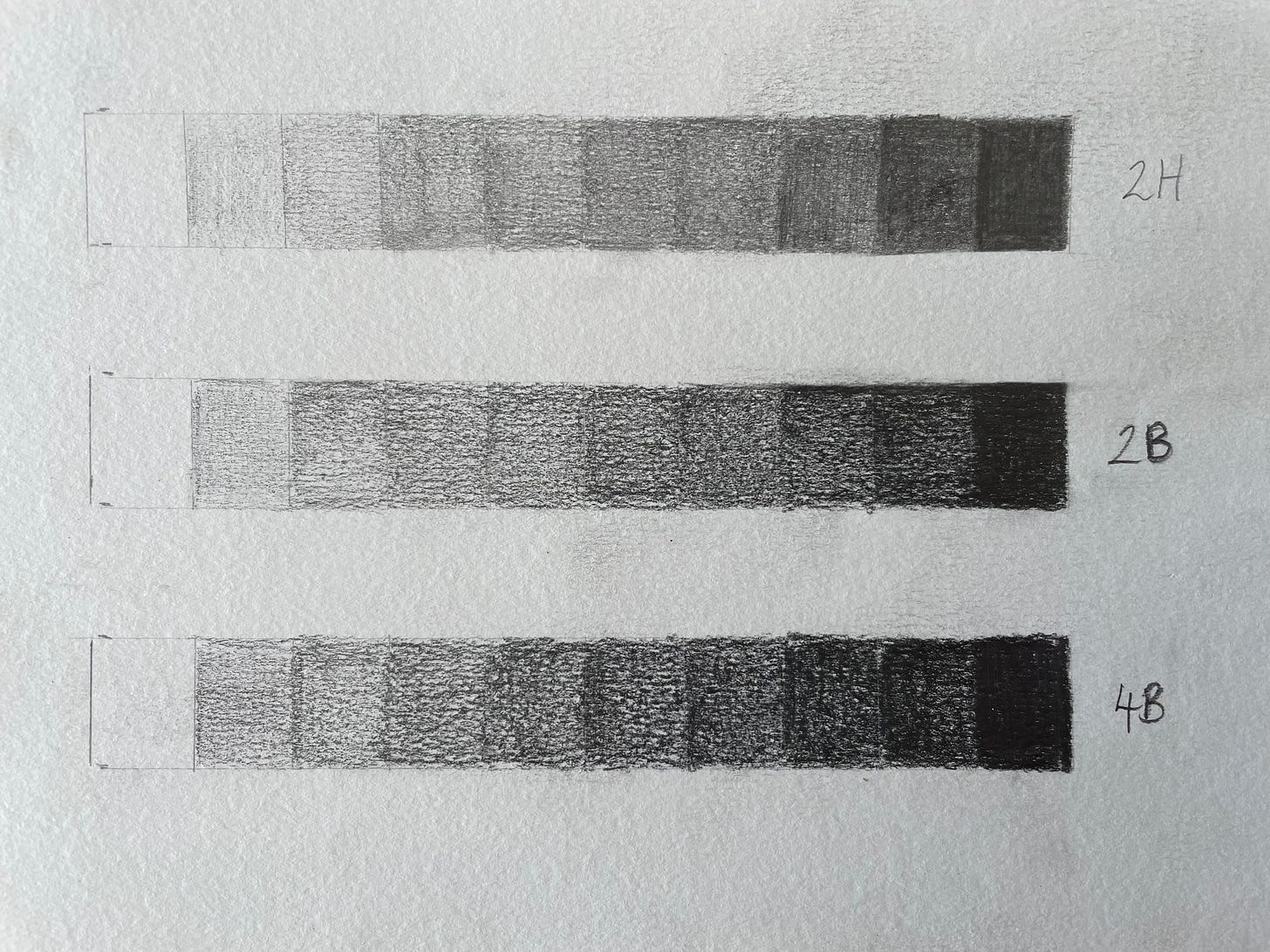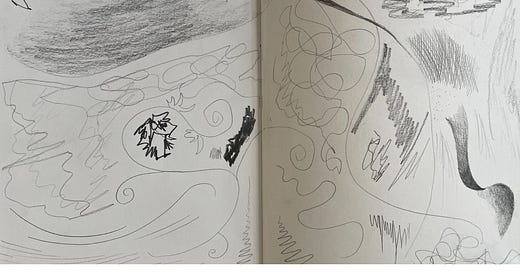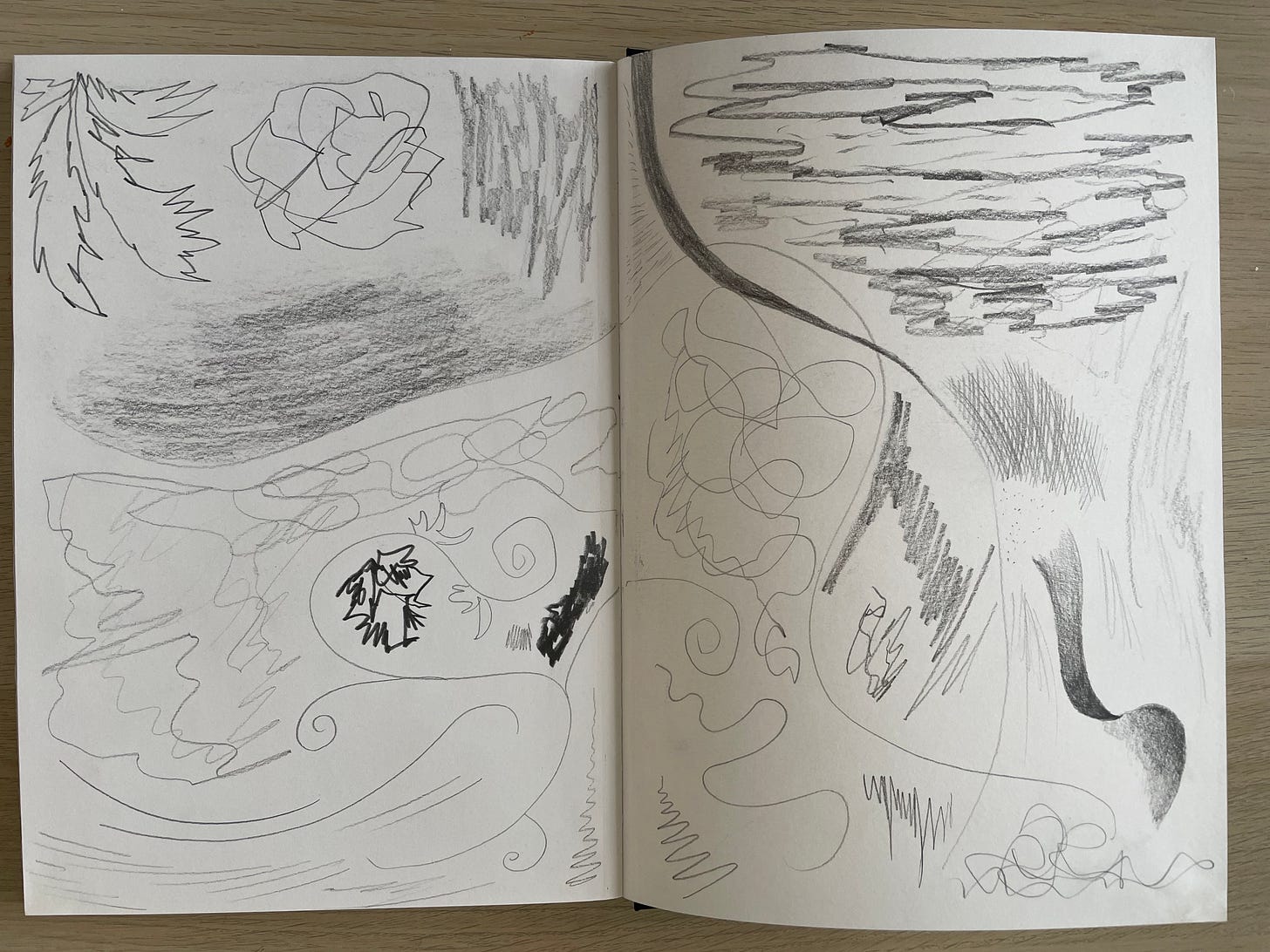Pencils offer a wonderful and enjoyable experience. They are incredibly accessible, easy to carry about, and can be used in various locations. I’ve taken mine to many places including the beach, the countryside, cafes, airplanes, and of course, my sofa. The meditative quality of drawing with a pencil is special. Being fully engaged in observing the subject you’re sketching provides a sense of presence while you create marks in various rhythms.
It’s amazing how many people who start lessons with me, don’t know the theory of graphite pencils. If you or your child are beginners, this may help you.
Pencils come in various weights or grades:
H = hardest
B = blackest
F = fine
The softer and darker the pencil, the higher the B grade, e.g. 9B is softer than 2B. F grade pencils will give the finest line.
The higher the H grade, the harder and lighter the pencil; for example, 9H is harder than 2H. By contrast, the higher the B grade, the softer and darker the pencil; for example, 9B is softer than 2B. Pencils graded F produce the finest lines. The graphic weight of pencils varies from 9H to 9B, indicating the hardness to softness spectrum.
When experimenting with mark-making, sketching, texture, and tone, 2H, 2B, and 4B pencils are excellent starting points. By adjusting the pressure you apply, you can influence the darkness or lightness of your marks: pressing harder creates darker lines, while lighter pressure produces softer marks.

Exploring the anatomy of a pencil can be a great way to draw, but equally you’ll learn so much from. While the tripod grip is the traditional method taught in schools, experimenting with different techniques can create fascinating results. Try holding the pencil higher up, drawing with it at various angles, holding it in unconventional ways, or even using your non-dominant hand just for fun.
If you have a go at drawing by exploring the anatomy of the pencil, I’d love to know how you get on.
Keep creating,









Thank you for a detailed write up on varieties of pencils and its applications.